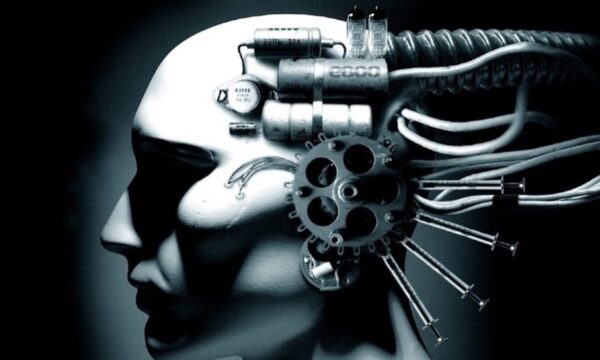rajkotupdates.news :
elon musk in 2022 neuralink start to implantation of brain chips in humans : Founded by Elon Musk, has unveiled its groundbreaking plan to connect human brains with technology. This ambitious venture aims to revolutionize the way we interact with computers and enhance human capabilities. Neuralink’s cutting-edge technology involves implanting tiny, flexible threads into the brain, which will be connected to an external computer interface.
This brain-computer interface (BCI) will enable seamless communication between the brain and external devices, potentially enabling people to control computers or prosthetic limbs with their thoughts. Neuralink’s ultimate goal is to address neurological disorders and create a symbiotic relationship between humans and AI. With ongoing research and development, Neuralink holds the promise of unlocking unprecedented possibilities for human potential.
According to : rajkotupdates.news : elon musk in 2022 neuralink start to implantation of brain chips in humans
But the long-term goal is to build a “digital superintelligence layer” to link humans with artificial intelligence, a technology he views as an existential threat to humanity.
Ultimately, we can do a full brain-machine interfaces where we can achieve a sort of symbiosis with AI,” Musk said. One goal along the way will be letting people type 40 words per minute just by thinking.
Neuralink has the potential to dramatically reshape both computing and humanity — if it and like-minded researchers can persuade regulators and society at large that we should be directly wired to machines. That’s a big if. The challenges are immense when it comes to developing the technology, making it practical and affordable, and convincing people it’s safe and desirable.
The startup uses sewing machine-like technology this year to drill small holes into brains and insert super-slender electrodes called threads, steering clear of blood vessels as they go.
“We hope to have this, aspirationally, in a human patient by the end of this year. So it’s not far,” Musk said. He acknowledged, though, that approval from the US Food and Drug Administration “is quite difficult.”Brain-machine interface (BMI) technology is active research at competitors and other laboratories. But some worry that Neuralink’s invasive method is risky.
Today, some epilepsy patients have dozens of wires inserted to monitor brain activity, said Bin He, head of biomedical engineering at Carnegie Mellon University and a researcher who favors noninvasive methods. “In the general population, I could not see how many of such inserted wires into a human’s brain would not cause risks or potentially impair the working of the brain,” He said.
Noninvasive methods not only can read brain activity but also stimulate it. That’s easier at the surface, but new breakthroughs show promise for communications with neurons deeper in the brain, He said.
Even if Neuralink’s approach works, don’t expect to download the ability to speak French anytime soon. The company’s first goals are dauntingly ambitious, and training the brain to understand the Neuralink signals won’t be easy, either, said Max Hodak, Neuralink’s president and co-founder. “It’s a long process. It’s like learning to touch-type or play piano,” he said.
In a research paper — authored by “Elon Musk and Neuralink” but not published in a peer-reviewed journal — Neuralink described progress using its technology with rats. In one case, it laced electrodes into a rat’s brain and fitted it with a USB-C port so the sensor data can be monitored. “This system serves as a state-of-the-art research platform and a first prototype towards a fully implantable human BMI,” the paper says.
Thousands of electrodes implanted by robot
rajkotupdates.news : elon musk in 2022 neuralink start to implantation of brain chips in humans : With Neuralink’s approach, a robot inserts tiny threads a quarter the width of a human hair. “The threads are about the same size as a neuron,” Musk said. “If you’re going to stick something in your brain, you want it to be tiny — approximately on par with the things that are already there.”
A “wisp” of 1,024 threads attach to a small chip, up to 10 of which will be embedded under your skin. Each will connect wirelessly to a wearable, detachable, upgradable “pod” behind your ear that communicates wirelessly with a phone. “The interface to the chip is wireless so you have no wires poking out of your head. It basically Bluetooths to your phone,” Musk said.
The installation takes place through holes 2mm wide, temporarily expanded to 8mm, then glued shut, Musk said. Among the company’s challenges are developing electrodes that will last “many decades,” but “getting the right coatings is a tough materials science problem.” The human brain is not a hospitable environment.
Electrodes read and write brain data
Neuralink is designing its electrodes not just to “read” from neurons what’s going on in the brain, but also to “write” signals into the brain. “You can use this technology in the brain to restore a sense of touch or vision,” said Neuralink scientist Philip Sabes.
Connections to the motor control parts of the brain also could help people with brain disorders, Sabes said.A person could imagine running, dancing or even kung fu,” Sabes said, with the Neuralink connection controlling their 3D avatar in a digital realm. “Ultimately, if and when technology for spinal cord nerve or muscle stimulation gets far enough, it could be used to restore that individual’s control over their own body.”
Neuralink hopes its procedure will be safe and easy enough that people will choose to undergo it. “This should be safe enough that it can be an elective procedure,” said company neurosurgeon Matthew MacDougall.
In tests so far, “we’ve been able to rapidly place thousands of electrodes into the brain without any bleeding,” MacDougall said. That’s because the electrodes are small — far smaller than the deep-brain stimulation electrodes that currently come with about a 1-in-100 risk of causing bleeding in the brain, he said.
In an era dominated by tech giants that have succeeded through computing hardware, software and services, Musk stands out as an entrepreneur who’s got a knack for other parts of the physical world — things like electricity, rocks and gravity.
rajkotupdates.news : elon musk in 2022 neuralink start to implantation of brain chips in humans : Musk is pretty busy. He’s got Tesla, which makes electric cars and trucks, massive electric power storage batteries and solar roofs. He’s got SpaceX, which is launching satellites — including its own set for providing internet service — and is working on rockets to get people to orbit, Mars and the other side of Earth. Then there’s the Boring Company, which is trying to create tunnels to relieve automobile congestion on ordinary roads.
Neuralink brings the squishier, immensely complicated realm of biology into Musk’s purview. Human brains are famously hard to understand, though computer scientists at companies like Facebook and Google are progressing rapidly at emulating some of how brains work through technology called neural networks, the most practical and promising foundation for today’s artificial intelligence work. One of the most useful aspects of that research is getting computers to understand humans better by processing human speech.
But as with his other projects, Musk sees Neuralink as important to civilization.Even in a benign AI scenario, we will be left behind. Hopefully it is a benign scenario,” in which superintelligent AIs surpass but don’t wipe out humans, Musk said. “With a high-bandwidth brain-machine interface, I think we can go along for the ride and effectively have the option of merging with AI.”





